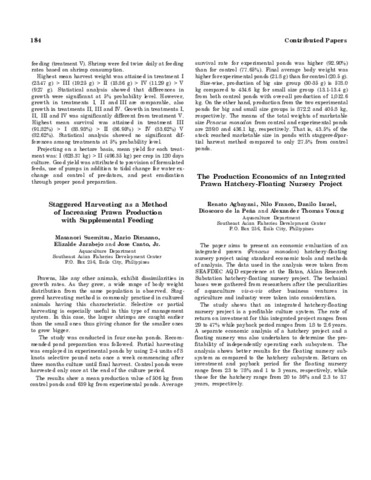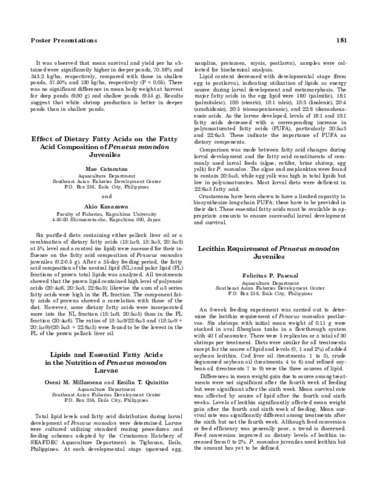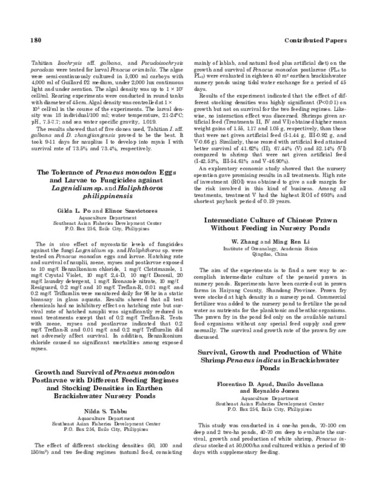Effect of nitrite, ammonia, and temperature on P. monodon larvae
- Global styles
- MLA
- Vancouver
- Elsevier - Harvard
- APA
- Help

View/
Downloads: 320
Date
1977Page views
5,684ASFA keyword
AGROVOC keyword
Taxonomic term
Metadata
Show full item record
Share
Abstract
P. monodon larvae were studied for the effects of temperature, ammonia, and nitrite on survival. Toxicity levels of nitrite were found to vary with larval stage. Larvae could tolerate ammonia up to about 10 ppm, with the effect more clearly shown by the zoea stage. Survival and growth were not significantly affected by temperature, although moulting was enhanced at temperatures higher than 29°C. Larvae of P. monodon have lower tolerance toward nitrite and ammonia compared to postlarvae. Although high survival was obtained at low levels of nitrite and ammonia, it is still necessary to know their effects on metabolism, in order to examine possible biochemical parameters for diagnosing sublethal toxicity or stress.
Description
Extended abstract only.
Suggested Citation
Catedral, F. F., Gerochi, D. D., Quibuyen, A. T., & Casalmir, C. M. (1977). Effect of nitrite, ammonia, and temperature on P. monodon larvae. SEAFDEC Aquaculture Department Quarterly Research Report , 1(3), 9-12. http://hdl.handle.net/10862/2298
Type
ArticleCollections
Related items
Showing items related by title, author, creator and subject.
-
Staggered harvesting as a method of increasing prawn production with supplemental feeding
Suemitsu, M.; Dimaano, M.; Jarabejo, E.; Canto, J. Jr. (Aquaculture Department, Southeast Asian Fisheries Development Center, 1985)Prawns, like any other animals, exhibit dissimilarities in growth rates. As they grow, a wide range of body weight distribution from the same population is observed. Staggered harvesting method is commonly practised in ... -
Lipids and essential fatty acids in the nutrition of Penaeus monodon larvae
Millamena, O.M.; Quinitio, E.T. (Aquaculture Department, Southeast Asian Fisheries Development Center, 1985)Total lipid levels and fatty acid distribution during larval development of Penaeus monodon were determined. Larvae were cultured utilizing standard rearing procedures and feeding schemes adopted by the Crustacean Hatchery ... -
The tolerance of Penaeus monodon eggs and larvae to fungicides against Lagenidium sp. and Haliphthoros philippinensis
Po, G.L.; Sanvictores, E. (Aquaculture Department, Southeast Asian Fisheries Development Center, 1985)The in vivo effect of mycostatic levels of fungicides against the fungi Lagenidium sp. and Haliphthoros sp. were tested on Penaeus monodon eggs and larvae. Hatching rate and survival of nauplii, zoeae, myses and postlarvae ...






